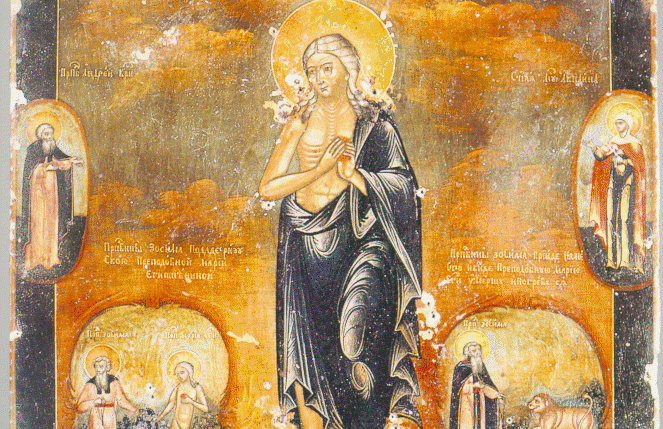St. Mary of Egypt was born in 344 AD, and moved to the city of Alexandria when she was 12 years old, where she worked as a prostitute. Intending to continue her trade, she joined a large group of pilgrims who were heading to Jerusalem for the feast of the Exaltation of the Cross.
On the feast day, Mary joined the crowd, going down to the church to venerate the relic of the True Cross. Although Mary intended to lure the men on the pilgrimage, when she reached the doors of the church, she was unable to enter. Each time she approached the door, a force propelled her away. Finally, Mary retreated to a corner of the churchyard, where she began to cry in remorse.
Before a statue of the Blessed Virgin, Mary prayed for permission to enter the church, so she could venerate the relic. She promised that she would renounce sin and the evils of the world.
Mary was then able to enter the church. She venerated the relic of the True Cross, and then prayed to Mary again for guidance. A voice told her to cross the Jordan River and find rest. When Mary arrived at the Jordan, she received communion in a church dedicated to St. John the Baptist, and then crossed the river and lived as a hermit for the next 47 years.
A priest, Zosimus, on a Lenten retreat, found Mary living in the desert. She asked him to return to the banks of the Jordan the next year, on Holy Thursday, to bring her communion. He did so, and she asked him to come back the next year, to the place where they had originally met.
The following year, Zosimus returned, but found St. Mary’s body. She had written on the ground that she wished to be buried, and noted that she had died in 421 AD, one year earlier, on the very night she received communion.

